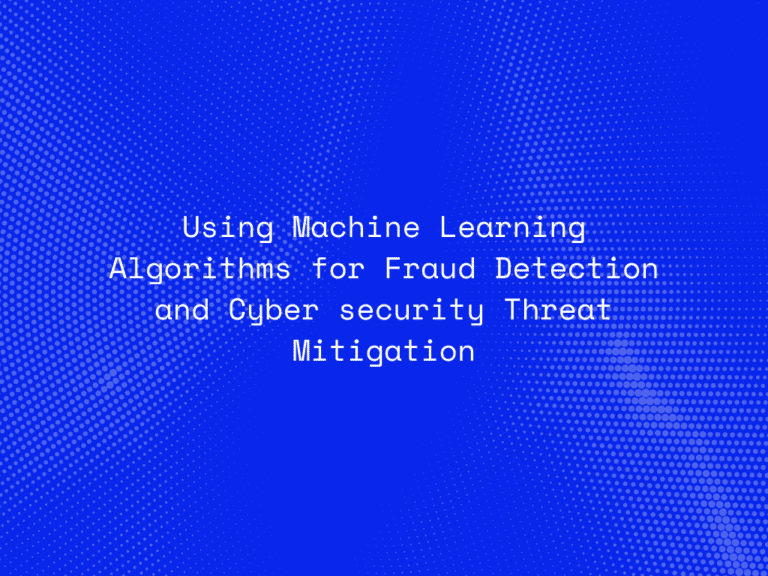The convergence of artificial intelligence (AI) and robotics is revolutionizing the way machines interact with the world. Traditionally, robots followed predefined instructions, performing repetitive tasks with precision but lacking adaptability. However, with the infusion of machine learning (ML), deep learning, computer vision, and natural language processing (NLP), robots are now capable of autonomous decision-making, real-time problem-solving, and human-like interactions.
From self-driving cars and AI-powered robotic assistants to automated warehouses and surgical robots, this powerful synergy is transforming industries. AI-driven robotics is not just about automation—it’s about creating intelligent systems that can sense, learn, and evolve.
In this blog, we explore how AI is enhancing robotics, its impact across industries, key challenges, and what the future holds for this dynamic field.
How AI is Advancing Robotics
1. AI-Driven Perception and Computer Vision
For robots to function effectively in dynamic environments, they must interpret visual data accurately. AI-powered computer vision allows robots to:
- Identify and classify objects in real-time using deep learning models.
- Navigate complex environments autonomously by recognizing obstacles.
- Enhance precision in industrial applications such as quality control and defect detection.
Example: In factories, AI-powered robotic arms use vision-based systems to inspect and sort defective products, reducing errors and improving efficiency.
2. Reinforcement Learning for Adaptive Decision-Making
Unlike traditional robots that follow static programming, AI-driven robots leverage reinforcement learning to improve their actions over time. This enables them to:
- Learn from trial and error to optimize performance.
- Adapt to new situations without requiring human intervention.
- Make complex decisions based on real-time data and predictions.
Example: Autonomous drones use reinforcement learning to navigate obstacles and adjust their flight paths dynamically.
3. Natural Language Processing (NLP) for Human-Robot Interaction
With advanced NLP models like ChatGPT, robots can now understand and respond to human commands naturally. This enhances their ability to:
- Assist in customer service and healthcare by engaging in real-time conversations.
- Interpret voice commands for smart assistants and robotic household devices.
- Translate and process languages in multilingual environments.
Example: AI-powered humanoid robots, such as Sophia by Hanson Robotics, interact with humans using NLP and facial recognition technology.
4. Autonomous Mobility and AI-Powered Navigation
Autonomous robots are revolutionizing mobility by:
- Using AI-powered sensors and LIDAR technology to navigate without human intervention.
- Detecting and avoiding obstacles in real-world environments.
- Optimizing routes for logistics and transportation.
Example: Waymo’s self-driving cars use AI-powered navigation to drive safely without human control.
Industries Transformed by AI-Driven Robotics
1. Manufacturing: Smart Factories and Automation
AI-powered robots are driving Industry 4.0, transforming manufacturing through:
- Predictive maintenance, which prevents equipment failures.
- Cobots (collaborative robots) that work alongside human workers to enhance efficiency.
- AI-driven quality control, which detects defects with high accuracy.
Example: Tesla’s AI-powered assembly line robots optimize vehicle production, reducing manufacturing time and costs.
2. Healthcare: AI-Powered Surgical and Assistive Robots
AI robotics is revolutionizing medicine by:
- Enhancing precision in surgeries through robotic-assisted procedures.
- Providing elderly and disabled individuals with AI-powered assistive devices.
- Automating repetitive lab tasks, such as sample analysis and diagnostics.
Example: The da Vinci Surgical System allows doctors to perform minimally invasive robotic surgeries with extreme accuracy.
3. Logistics and E-Commerce: AI Robotics in Supply Chains
AI-driven robots are streamlining logistics by:
- Automating warehouses with robotic pickers and sorters.
- Managing inventory with real-time AI tracking.
- Improving last-mile delivery through AI-powered drones and robots.
Example: Amazon’s Kiva robots transport goods in fulfillment centers, significantly reducing delivery times.
4. Agriculture: Smart Farming with AI Robotics
The agriculture sector is benefiting from AI-driven robotics through:
- Precision farming, which optimizes irrigation and fertilization.
- Autonomous harvesting robots that reduce labor costs.
- AI-powered crop monitoring for early disease detection.
Example: John Deere’s AI-powered self-driving tractors improve farming efficiency.
5. Smart Cities: AI Robotics for Urban Infrastructure
Cities are integrating AI robotics for:
- Autonomous public transport and traffic management.
- AI-powered security surveillance.
- Robotic waste collection and environmental monitoring.
Example: AI-driven robotic street cleaners autonomously maintain public hygiene in Singapore.
Challenges and Ethical Concerns
1. Job Displacement vs. Workforce Transformation
The rise of AI-driven automation raises concerns about job losses, particularly in manufacturing, logistics, and customer service. However, new roles are emerging in AI supervision, robotics maintenance, and system integration.
2. AI Bias and Ethical Decision-Making
Robots trained on biased data can make unfair or unethical decisions, particularly in areas like healthcare, hiring, and law enforcement. Ensuring ethical AI frameworks is crucial to prevent discrimination.
3. Privacy and Security Risks
Autonomous robots collect vast amounts of data, raising concerns about cybersecurity and data privacy. Robust AI governance and security measures are required to mitigate risks.
4. Accountability in AI Robotics
Who is responsible when an autonomous AI system malfunctions? The need for clear legal frameworks to define accountability in AI-driven robotics is a growing debate.
The Future of AI Robotics
The evolution of AI-powered robotics will bring:
- General-purpose robots capable of performing multiple functions.
- AI-driven humanoid robots in homes, hospitals, and businesses.
- Fully autonomous AI-powered cities with robotic infrastructure.
Key Future Trends
- AI and 5G Connectivity – Ultra-fast data transmission will enable real-time robot communication.
- Brain-Computer Interfaces (BCIs) – AI-powered exoskeletons may assist individuals with mobility impairments.
- Human-Robot Collaboration (HRC) – Cobots will enhance efficiency in workplaces.
AI and robotics are no longer just about automation. They are shaping the future of human-machine collaboration, unlocking new possibilities for industries and society.
The challenge ahead lies in ensuring responsible AI development, addressing ethical concerns, and embracing a future where intelligent machines enhance human potential.




